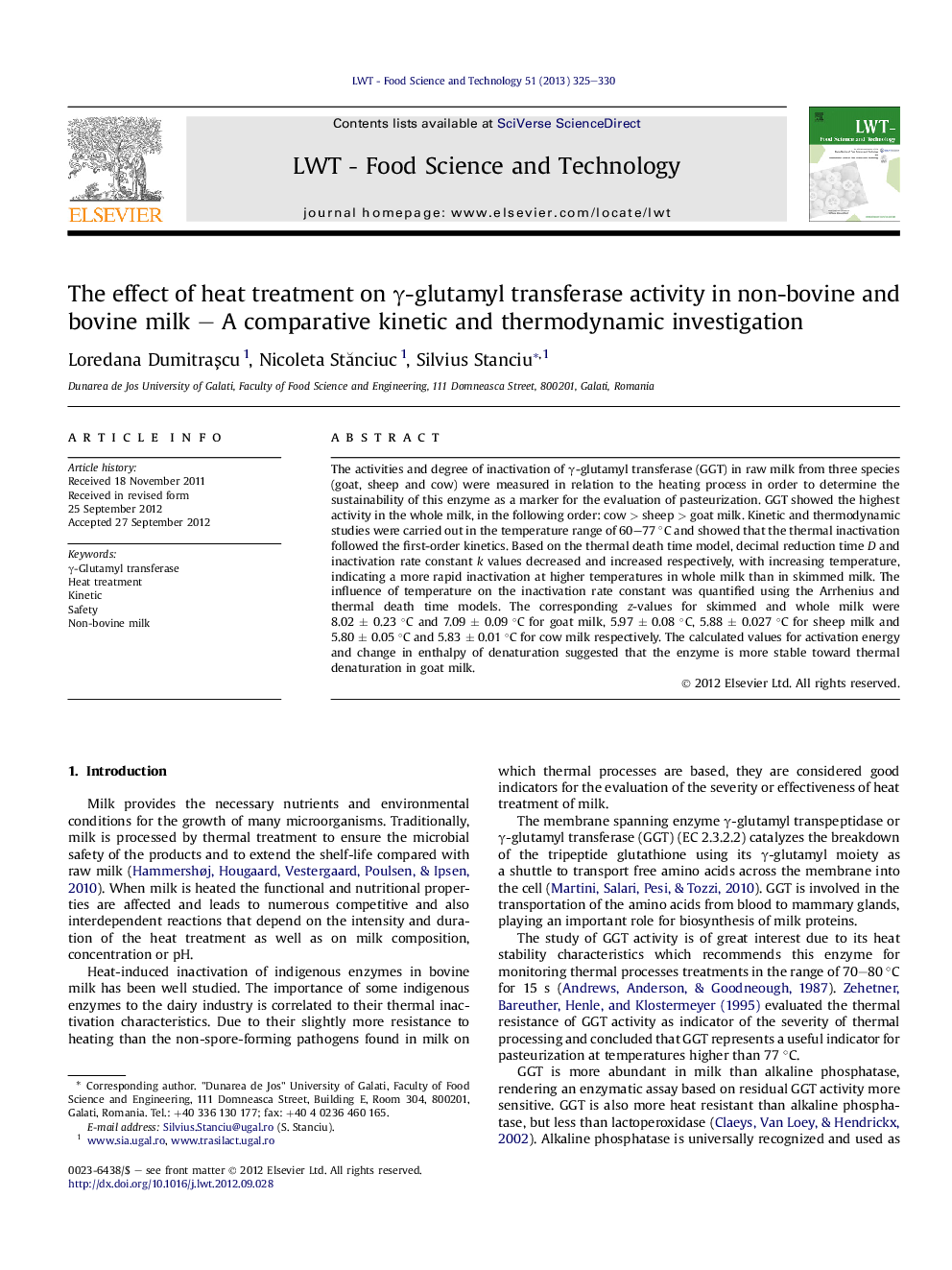| Article ID | Journal | Published Year | Pages | File Type |
|---|---|---|---|---|
| 6404798 | LWT - Food Science and Technology | 2013 | 6 Pages |
The activities and degree of inactivation of γ-glutamyl transferase (GGT) in raw milk from three species (goat, sheep and cow) were measured in relation to the heating process in order to determine the sustainability of this enzyme as a marker for the evaluation of pasteurization. GGT showed the highest activity in the whole milk, in the following order: cow > sheep > goat milk. Kinetic and thermodynamic studies were carried out in the temperature range of 60-77 °C and showed that the thermal inactivation followed the first-order kinetics. Based on the thermal death time model, decimal reduction time D and inactivation rate constant k values decreased and increased respectively, with increasing temperature, indicating a more rapid inactivation at higher temperatures in whole milk than in skimmed milk. The influence of temperature on the inactivation rate constant was quantified using the Arrhenius and thermal death time models. The corresponding z-values for skimmed and whole milk were 8.02 ± 0.23 °C and 7.09 ± 0.09 °C for goat milk, 5.97 ± 0.08 °C, 5.88 ± 0.027 °C for sheep milk and 5.80 ± 0.05 °C and 5.83 ± 0.01 °C for cow milk respectively. The calculated values for activation energy and change in enthalpy of denaturation suggested that the enzyme is more stable toward thermal denaturation in goat milk.
⺠We monitor the heat stability profiles of GGT in whole and skimmed bovine and non-bovine milk. ⺠GGT activity varied as a function of species and fat content, as follow: cow > sheep > goat. ⺠The heat stability increased in the following order: goat < sheep < cow milk. ⺠GGT can be used as marker to evaluate the efficiency of certain heating process.
